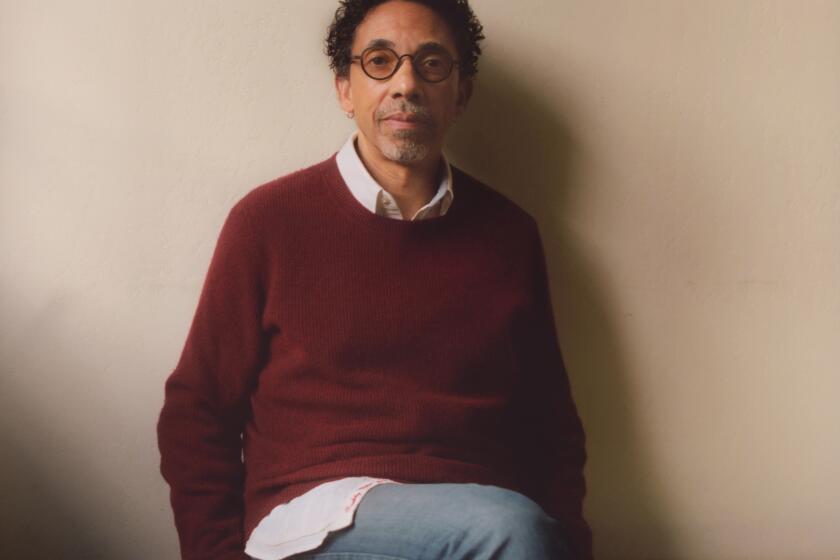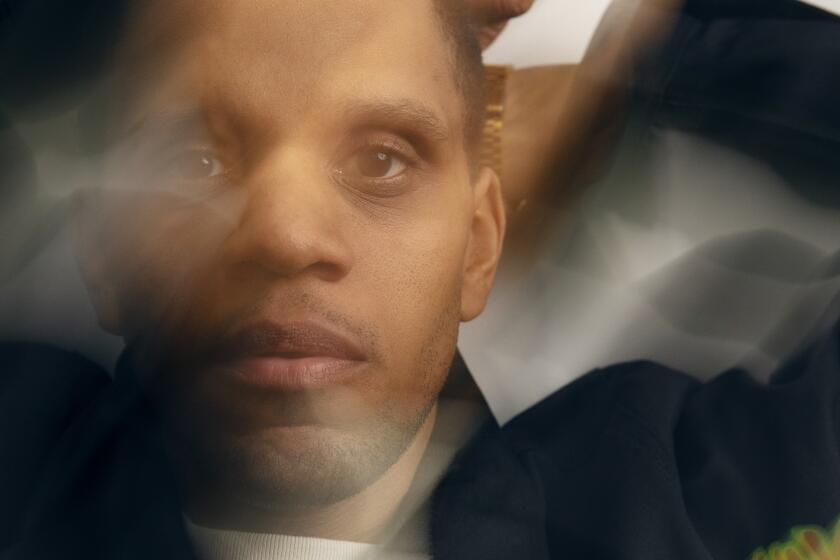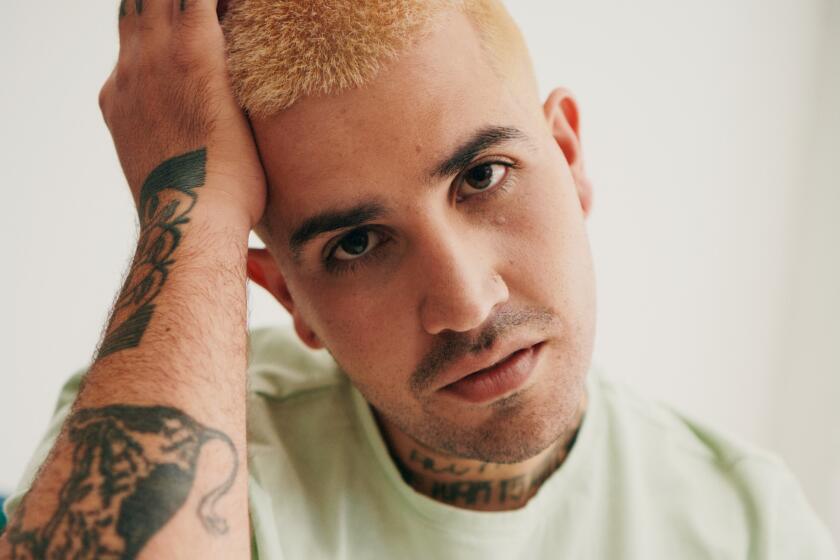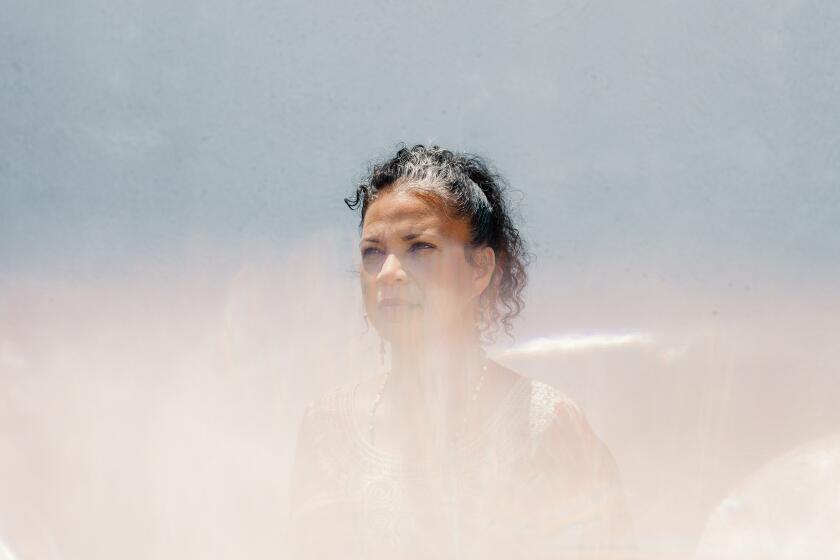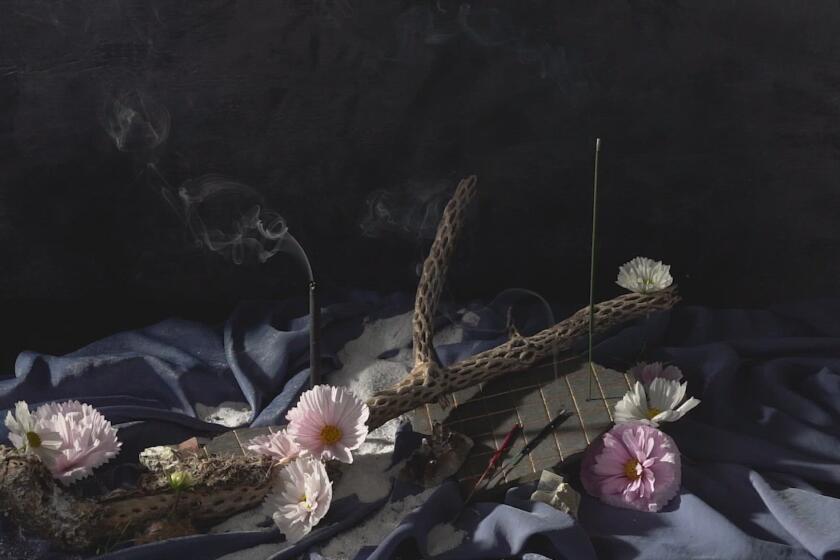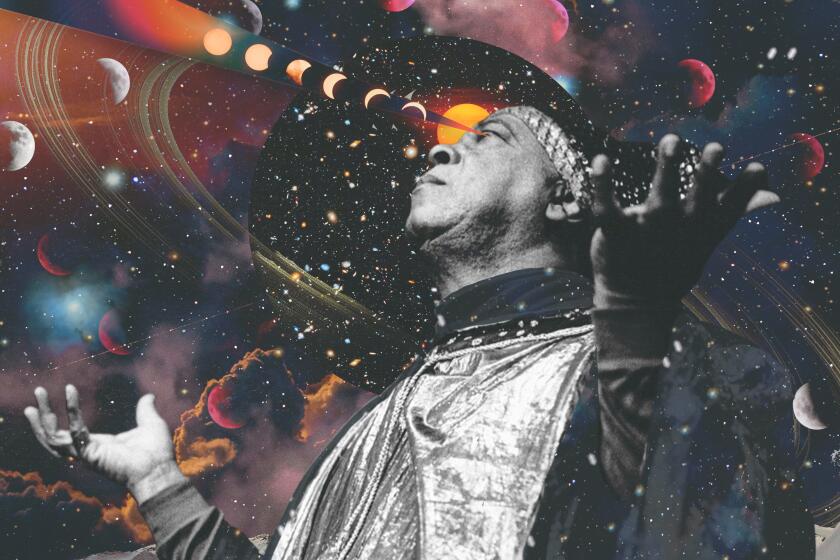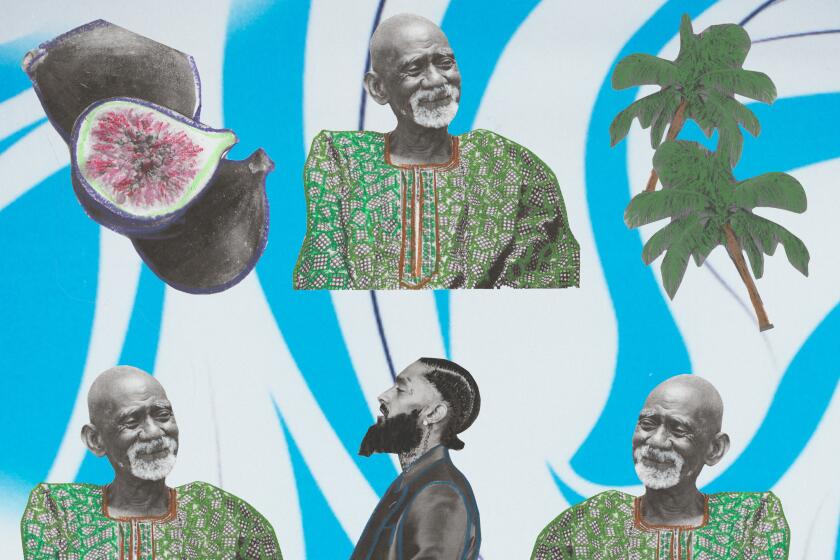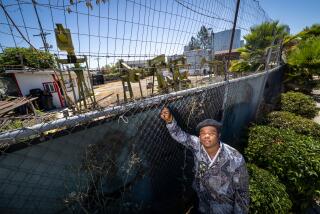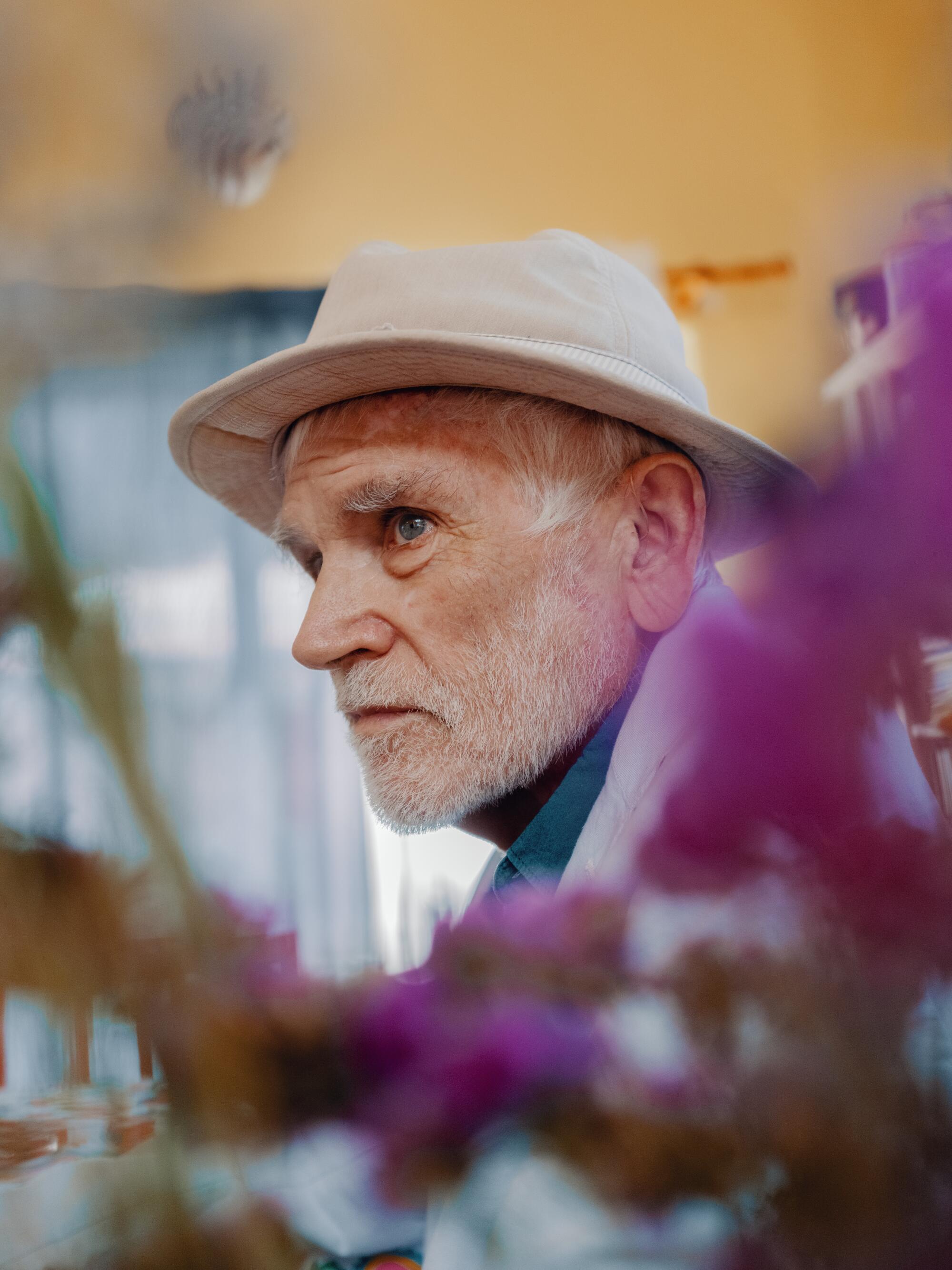
This story is part of Image issue 12, “Commitment (The Woo Woo Issue),” where we explore why Los Angeles is the land of true believers. Read the whole issue here.)
In late June, I wrote to Mike Davis to see if he’d be up for an interview.
His reply: “If you don’t mind the long trek to SD, I’d be happy to talk. I’m in the terminal stage of metastatic esophageal cancer but still up and around the house.”
Davis does not mince words. Still, he can tell some stories. Like this one: Born in Fontana, raised in El Cajon, he spent the ’60s on the front lines of radical political movements in Los Angeles, where he joined the Communist Party alongside Angela Davis. In solidarity, he gave her a car — a cherry of a ’54 Chevy. A month later, at a Party meeting, he asked how she liked it, only to hear that the battery had supposedly blown up, and a “kind” mechanic had agreed to take it off her hands for free.
Or this: In 1970, he marched on wildcat Teamster picket lines alongside union brothers with sawed-off shotguns under their trenchcoats in the summer sun. Then there was the time he fled the phalanx of sheriffs that descended on Belvedere Park during the Chicano Moratorium.
Robin D.G. Kelley and Vinson Cunningham on L.A. solidarity and the Black Radical Tradition.
But the story that put Davis on the cultural map, laid out in his 1990 bestseller “City of Quartz,” is the story of Los Angeles. The book, required reading for anyone who wants to understand the city, detailed a history of L.A. as a corrupt machine built to enrich its elite while the white supremacist LAPD served as attack dogs to beat, jail and kill troublemakers. It also warned another conflagration, Watts 2.0, could be on the horizon. Eighteen months later, in April ’92, the city exploded. Davis looked like a seer, though he said the simmering rage was obvious to anyone who got out of their car. He became a minor celebrity. He also started working alongside the leaders of the gang truce to advocate for reinvestment in South L.A.
An astonishing run of more than a dozen books followed, oscillating between critiques and histories of the American West and sweeping historical analyses of how climate disaster, capitalism and colonialism have ground the global poor between their gears and set us up for future calamity (including global viral pandemics, predicted in 2005’s “The Monster at Our Door”). Recently, he returned to L.A. as a subject with 2020’s “Set the Night on Fire,” an encyclopedic history of L.A. in the ’60s told through social movements.
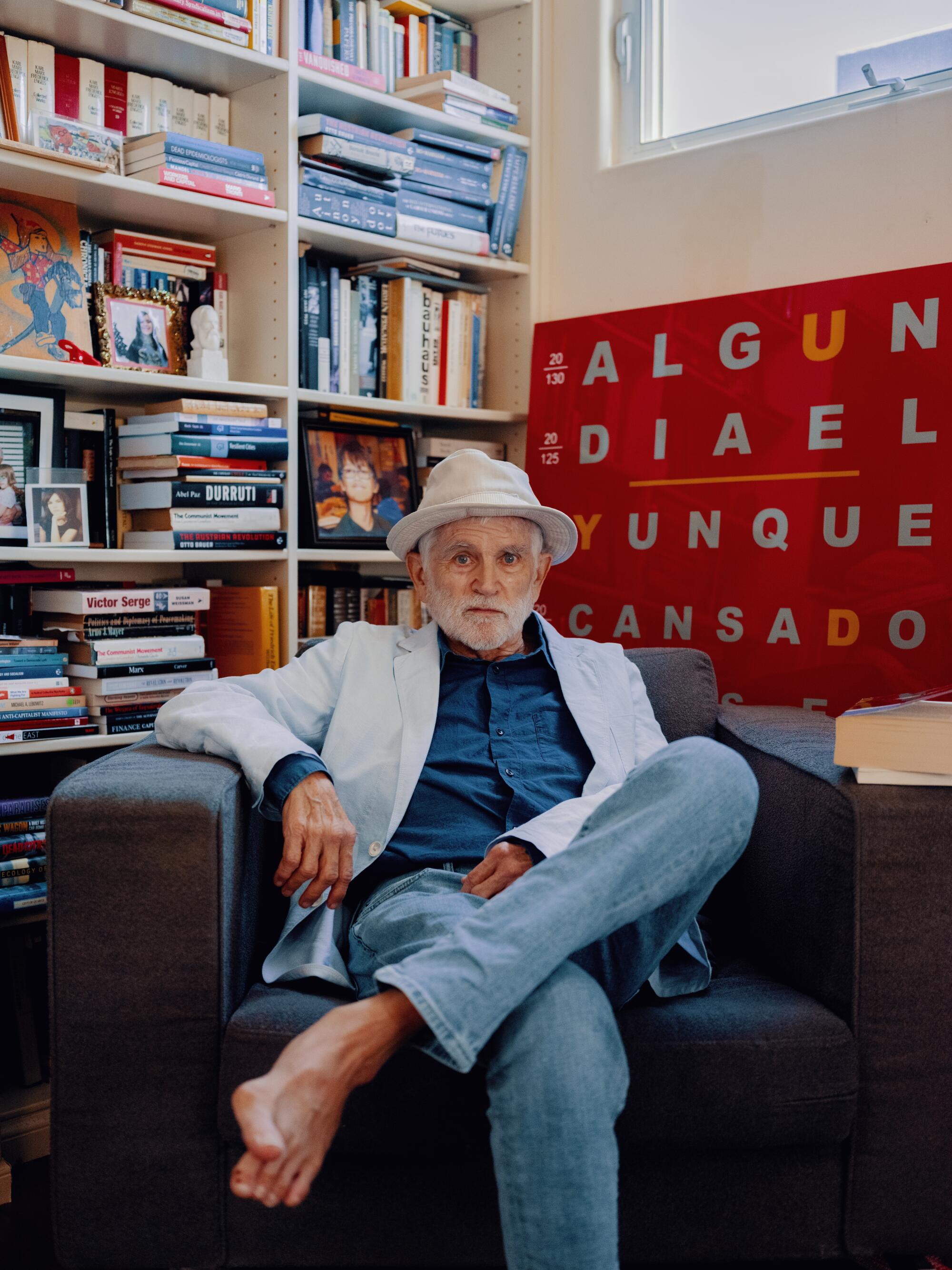
In person, Davis, 76, is very funny, unfailingly generous and seems, above all, to love people. His home is stuffed with books (he reads “500 pages a day”), pet reptiles and a collection of leftist art and artifacts shared with his wife, artist and professor Alessandra Moctezuma. Our conversation lasted from midday until sunset. Davis regaled me with stories of unfinished projects and outlaws he’d known, dangerous students (arsonists, stalkers) and endangering students (a Fijian prince was stabbed during a class assignment to “hang out in L.A. at night” but thanked him for it), and what he considers his true passions — the dying ecology of California and igneous rocks, which he’s traveled the world to collect and store in his converted-garage office.
This interview has been condensed and edited.
Sam Dean: You’ve decided to stop chemo treatments for your esophageal cancer. What are you thinking about, day to day?
Mike Davis: First of all, I have plenty of distractions. I read maybe 500 pages a day — military history, exploration — and in the evenings I cuddle with my kids and we watch some crime show.
I’m a fatalistic Celt, and I have the example of my mother and older sister, who died like Russian soldiers at Stalingrad. I intend to not let [my family] down, to be just as solid as they were. I’m not depressed. The major thing in dying that I was worried about — my father had an especially agonizing death, the trauma of it’s never quite left me — was the thought that it might be so traumatic for my kids that that’s what they remember of me. But thanks to [California’s] aid-in-dying law, I have control over the final act.
But I guess what I think about the most is that I’m just extraordinarily furious and angry. If I have a regret, it’s not dying in battle or at a barricade as I’ve always romantically imagined — you know, fighting.
SD: You were slapped with the label “prophet of doom” after “City of Quartz” came out in 1992 — in which you did seem to anticipate the ’92 uprisings in response to the Rodney King verdict. But you’ve described yourself as a “neo-catastrophist,” in the more narrow sense of believing that history, from geological history to human political history, happens more in violent leaps like earthquakes and meteor impacts and revolutions than in gradual shifts. Do you still think of yourself as a catastrophist today?
MD: Yes. But I mean catastrophist in two ways. One, in resonance with Walter Benjamin, is the belief in the sudden appearance of opportunities to take leaps into an almost utopian future. But of course, catastrophist in the other sense too, of, you know, events like plagues. Now, in my fading days, I sit here with wonderment and read the paper, and people are saying you gotta have more coal, gotta have more oil, a year after the Intergovernmental Panel on Climate Change report made clear that we are without question entering at least a 3-degree-Celsius world. Which is almost unimaginable. And what I’ve tried to write about and convince people of is that this is an already anticipated genocide. A large minority, the poorest people on the planet, are in a sense doomed.
And as for the old thing of, well, flying saucers will land and humanity joins in a common cause — look at the bodies piling up on borders and the walls being built. Environmental refugees will simply die.
An exhibition at REDCAT is built on Octavia E. Butler’s “Parable of the Sower.” Its creator, American Artist, talks with Tananarive Due.
SD: Your most recent book, “Set the Night on Fire,” covered the movement history of L.A. in the ’60s — and how the LAPD and Sheriff’s Department, along with the FBI, brutally suppressed activist groups.
MD: The LAPD in my mind is unreformable. But the Sheriff’s Department is absolutely frightening. They’ve always been, to some extent: I was in the Chicano Moratorium and Belvedere Park, in all the big Eastside demonstrations in the ’70s, when the sheriffs would just come in shooting. But they’ve never been so wildly and completely out of control as they are now.
The problem is the culture and the cadre. The older sheriffs, like many of the older [LAPD], are simply unreformable. The real solution is just fire them en masse, take over the academies, break up the gangs and, very importantly, require people to live in the areas they patrol, or at least within city limits. There’s no way that you’re going to have an acceptable Police or Sheriff’s Department in a city so full of class and economic contradictions as Los Angeles. That’s not a reason not to reform, but it’s a reason to be realistic about the limits of it.
SD: You’ve spent much of your life on the front lines of struggles for social justice and political change, from CORE [the Congress of Racial Equality] and SDS [Students for a Democratic Society] early in your life to labor activism and international solidarity movements in later years. The act of organizing seems to rest on hope for changing the world, but your books paint a grim picture: ecological collapse, political corruption, white supremacy, the continuing immiseration of the global poor. How do you hold on to hope?
MD: To put it bluntly, I don’t think hope is a scientific category. And I don’t think that people fight or stay the course because of hope, I think people do it out of love and anger. Everybody always wants to know: Aren’t you hopeful? Don’t you believe in hope? To me, this is not a rational conversation. I try and write as honestly and realistically as I can. And you know, I see bad stuff. I see a city decaying from the bottom up. I see the landscapes that are so important to me as a Californian dying, irrevocably changed. I see fascism. I’m writing because I’m hoping the people who read it don’t need dollops of hope or good endings but are reading so that they’ll know what to fight, and fight even when the fight seems hopeless.
SD: In interviews in 2020, you did express some optimism about the energy you saw in the streets during the Black Lives Matter protests. Two years on, where have you seen that energy go?
MD: I’m old enough to say with some authority that this generation is different from any other postwar generation. The combination of seeing rights stripped away on one side and facing declining economic ability on the other has radicalized them and has given struggles over what some people denounce as identity politics a very material force.
Kids are looking at their future. Before I retired from teaching at [UC] Riverside, I can’t tell you how many conversations I had with kids who were just agonized. They’re the first to go to college in their family, and suddenly their parents lose their jobs and they don’t know where to turn because there’s so many expectations and so many sacrifices been made to get them into university that this will somehow pan out into a real future. And that wasn’t happening.
But the biggest single political problem in the United States right now has been the demoralization of tens of thousands, probably hundreds of thousands of young activists. Part of the problem is the lack of organizational structure, particularly of organizations of organizers. There’s no leadership to give direction.

I mean, I’m a supporter of Bernie Sanders, but the Sanders campaign held up this idea that we use movements to build electoral politics and electoral politics to build movements. If you look at the history of popular movements in relationship to electoral politics, that’s hardly ever been true. I mean, Bernie and AOC and so on, they’re on every picket line and they’re always for the right thing, but they’ve allowed the movement in the streets to dissipate, and kids or young people are so demoralized.
SD: What could be happening instead?
MD: Why is it that the right, the extreme right, owns the streets and not the left? It’s not like Europe, where in a lot of countries youth activism is quiescent or on decline. There are millions of people like [my 18-year-old son], but who’s telling him where to go to fight or what to do?
Who’s inviting him to the meeting? All they get instead, and what I get every day, are 10 solicitations from Democrats to support candidates. I vote for those candidates. I think they should be supported, but the movement’s more important. And we’ve forgotten the use of disciplined, aggressive but nonviolent civil disobedience. Take climate change. We should be sitting in at the headquarters of every oil company every day of the week. You could easily put together a national campaign. You have tons of people who are willing to get arrested, who are so up to do it. Nobody’s organizing that.
The biggest single political problem in the United States right now has been the demoralization of tens of thousands, probably hundreds of thousands of young activists.
— urban theorist, scholar, activist and historian Mike Davis
SD: You say aggressive, nonviolent civil disobedience is necessary. But what about political violence? You wrote a book about the history of the car bomb, “Buda’s Wagon.” You also lived through both L.A. uprisings, you were a Friend of the Panthers, you lived in Belfast during the Troubles. Are you ever surprised there isn’t more political violence happening in the U.S.?
MD: I remember at the height of the scare about the Black Panthers, I would tell people: What is so remarkable is there’s so little Black-on-white violence in American history compared to the relentless white violence against people of color.
But we’ve not seen the kind of violence that’s coming from the right, nor have we seen — because we haven’t been dangerous enough recently — what will happen when all the new repressive powers of surveillance, all the antiterrorist legislation, comes down on progressive movements. The Democrats’ reaction to the war on terror, on most crime bills, has been to reform a little bit at the edges but never attempt to dismantle it.
Poet Christopher Soto unpacks how the history of policing has shaped and scarred the urban fabric of Los Angeles.
SD: You recently wrote about the megalomania behind Putin’s invasion of Ukraine, and concluded by saying, “Never has so much fused economic, mediatic and military power been put into so few hands. It should make us pay homage at the hero graves of Aleksandr Ilyich Ulyanov, Alexander Berkman and the incomparable Sholem Schwarzbard.” All were assassins or attempted assassins, right?
MD: Did you look up that last name? He killed [Symon Petliura,] the great hero of the Ukrainian independence movement. He shot him on a Paris street, and a Paris jury found him innocent once they heard the story of the pogroms and so on. Kind of like the Angela Davis jury. Great character.
One of the major book projects that I never finished, though have been interviewed about it and was published as a separate book in French, was a project called “Heroes of Hell,” looking at violent revolution in the 19th and early 20th century. Bolsheviks were always opposed to individual acts of violence, because Russia had so much experience with that before the revolution — the Leninist argument was that you’re substituting the heroic deed for mass action, the heroic sacrificial individual for the class. It made a lot of sense.
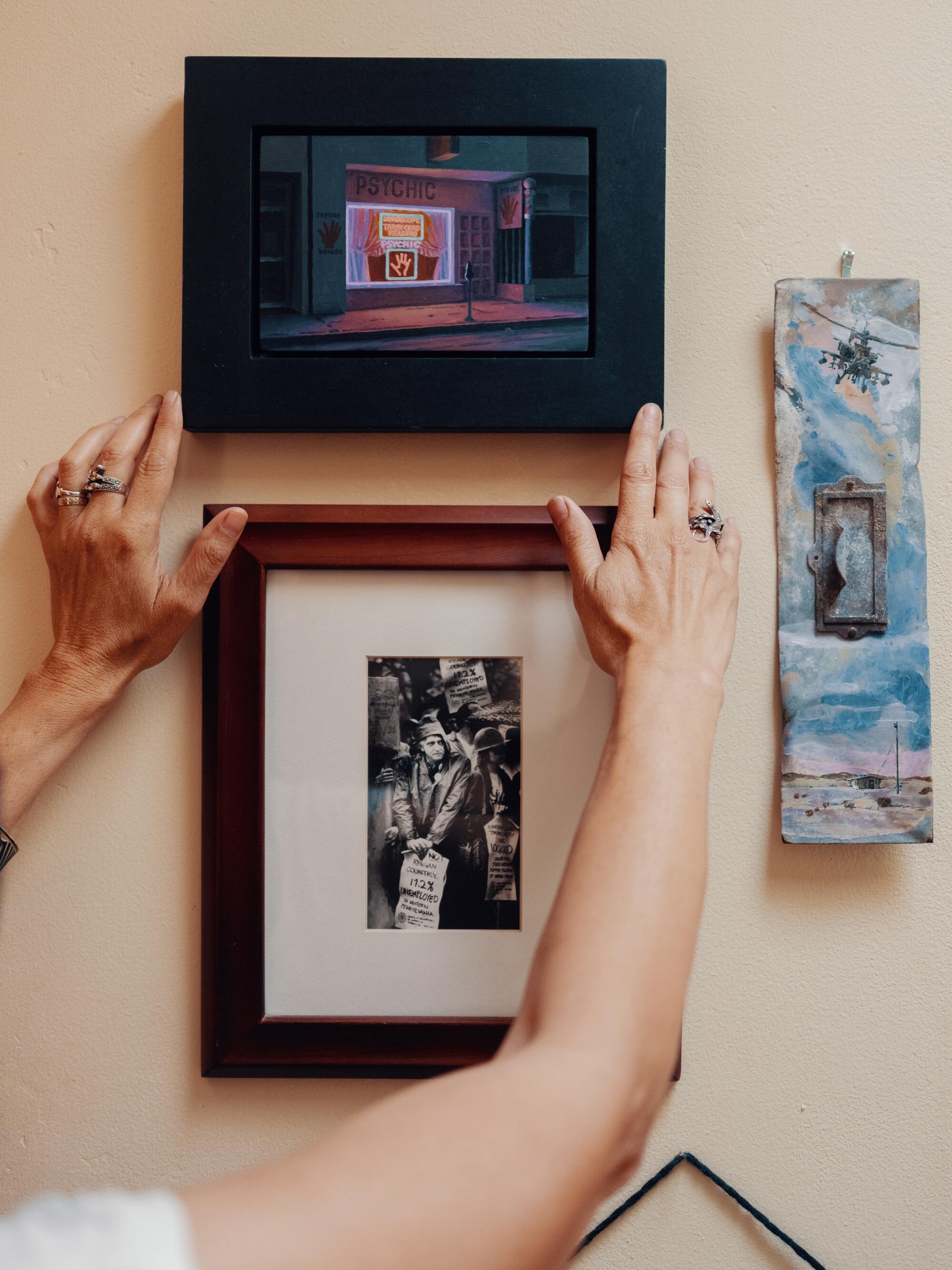
To me political violence is something to be judged much more rationally than morally. And there are instances: After the death of Franco, the Francoist transition to preserve the regime had all been set in place. [Luis] Carrero Blanco was the anointed successor to Franco, and a group blew his car over a cathedral. It totally disrupted the succession, and made relative democratization possible. We know on the negative side that if Fanny Kaplan hadn’t shot Lenin, Stalin might not have happened. To me it’s an open question depending on context and conditions.
I, by the way, never supported the Weathermen. In fact, I profoundly hate the Weather People. Those people did exactly what cops would’ve done, and now they’ve reinvented history to make themselves heroes. To me, they’re just rich kids, along with some ordinary kids, playing “Zabriskie Point” for themselves.
SD: You didn’t decide to go to college until you were nearly 30, and your first book, “Prisoners of the American Dream,” came out when you were 40. Had you always wanted to write?
MD: No, learning to write is the most difficult thing I’ve ever done. It involved sometimes a whole ream of paper on an electric typewriter just to get the first sentence. It was absolutely brutal.
SD: So why did you want to do it?
MD: Because I was such a miserable failure as an organizer and speaker. The first speech I ever gave was an antiwar rally in Stanford, 1965. I was working on this crazy SDS project in Oakland. I succeeded in driving away three-quarters of the crowd within about five minutes. I’ve spent years in tiny little groups trying to regroup with even smaller groups, going to every demonstration, trying this and that. And writing became the one skill that was useful for political activity, for the movement.
Black Lives Matter L.A. leader Melina Abdullah discusses her parenting approach and efforts to challenge the status quo.
SD: Who influenced your writing the most? What were you reading that made you want to write?
MD: I’ve never read much fiction, so the fiction I did read had a lot of influence, starting with “The Grapes of Wrath.” The kind of biblical cadence and language of Steinbeck. Then the New Left Review was an early influence on my writing, and in some ways a bad one.
One of my most profound literary and intellectual influences was the Welsh Marxist named Gwyn Williams. He had come out of the communist historians group, [had] been the first to write an article in English on Gramsci, but above all had this command of Welsh history on so many different levels. So to some extent I wanted L.A. to be…
SD: Your Wales?
MD: Yeah! And then of course, in natural history the great influence of mine was my friend Steve Pyne. He’s the fire historian, and just a great all-around character. He was a firefighter and went to Stanford on a baseball scholarship. I picked up his book when I was very homesick in London and read his social history of fire in America. And suddenly I wanted to write the environmental history of L.A. as political and social history.
But the real core of my writing was storytelling. I told one of my colleagues at Riverside, I’m not a writer’s writer at all, but I am a damn good storyteller. And I have been around some of the best storytellers on the planet. You know, in Belfast pubs and logger bars in Butte, Montana, I’ve heard magnificent stories.
SD: What are some of the most surprising reactions you’ve seen to your work?
MD: After “City of Quartz” came out, I became close friends with Kevin Starr. We were set to debate. [The L.A. Times described Starr and Davis as “Dueling Prophets of Next L.A.” in 1994; Starr published a rosier L.A. history book at the same time as Davis’.] He was so charming and nice that I started seeing him for meals with his wife, and he was a regular attendee of Bohemian Grove. So he invited me to Bohemian Grove.
SD: Really?
MD: I said, “What? They’d never let me in Bohemian Grove in a million years!” He said, “Oh yes, they will. The only problem is you can’t film or record or ever write about it.” And so I said: “Too bad.” Friends of mine were angry at me. Everybody wanted me to go to Bohemian Grove. But all that happens at Bohemian Grove is that George Shultz and a bunch of billionaires run around peeing on redwood trees acting like 7-year-olds.
I’ve turned down other invitations that really aggravated my friends. I got an invitation to the Vatican.
SD: Who invited you to the Vatican?
MD: The office of Francis. Based on “Planet of Slums.” And I decided not to do that.
SD: Before we wrap up, are there any, I don’t know, exhortations, calls to action, that you want to share?
MD: Uh, no. I’ve resisted various things, one of which is the writerly idea that you have to write something profound about your termination. I have no intention of doing that, nor any compulsion to write some mock-heroic thing. When my older sister died, I became certain I was gonna die too. Though I didn’t know it would be of the same cancer that she had. And I wrote two poems that pretty much sum up my view of life, just straightforward poems. I’ll leave those behind.
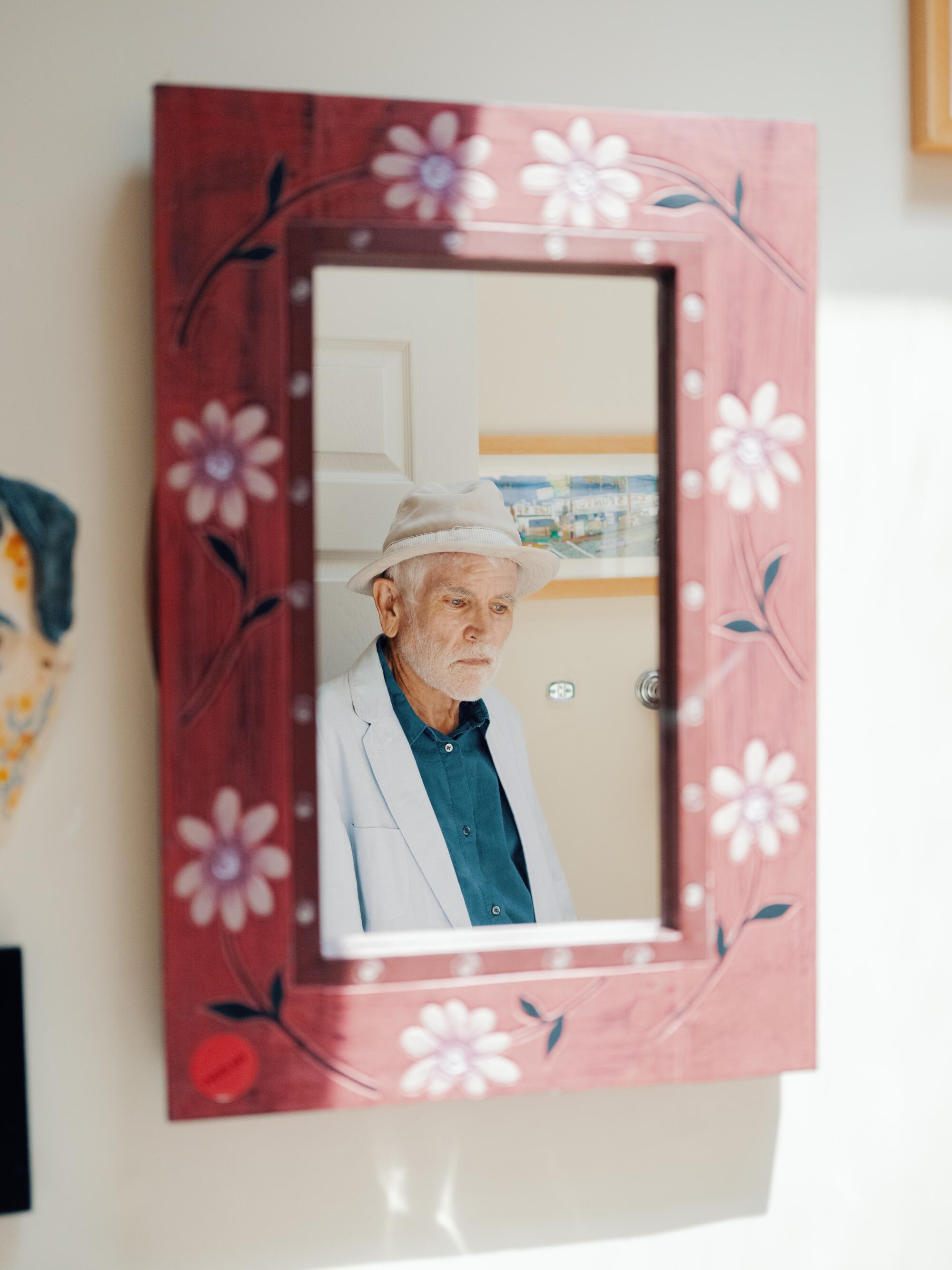
I think people who read my stuff pretty much get it. One of the reasons this “aid in dying” is important to me is that it also ensures I won’t lose my sense of humor. But what my older sister taught me when she got the final verdict — and she was just as straightforward and brave as she was in everything else in her life — was that it’s an opportunity to teach your children not to be afraid of this. To be sad but not fear it.
I’m just an ordinary person going through what every ordinary person eventually goes through under circumstances that aren’t especially tragic at all. Except maybe for some of the family.
But no need to make, you know, ponderous statements. It’s been more fun just watching Golden State play or Scandinavian mysteries or reading books, above all relaxing and hanging out with the family. I’m so lucky to be cocooned in all the love I have here.
More stories from Image
